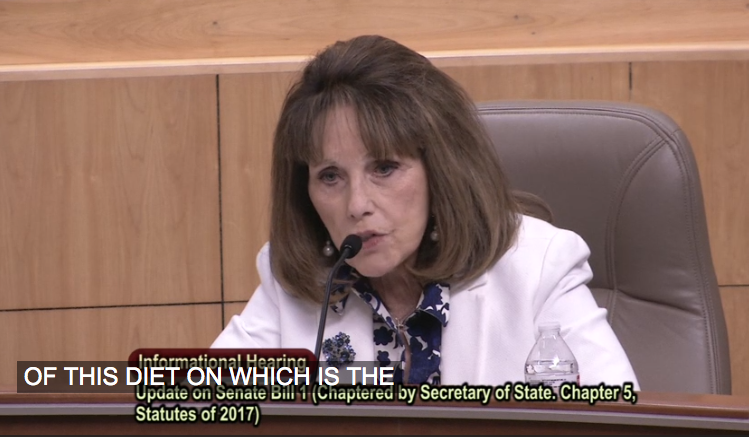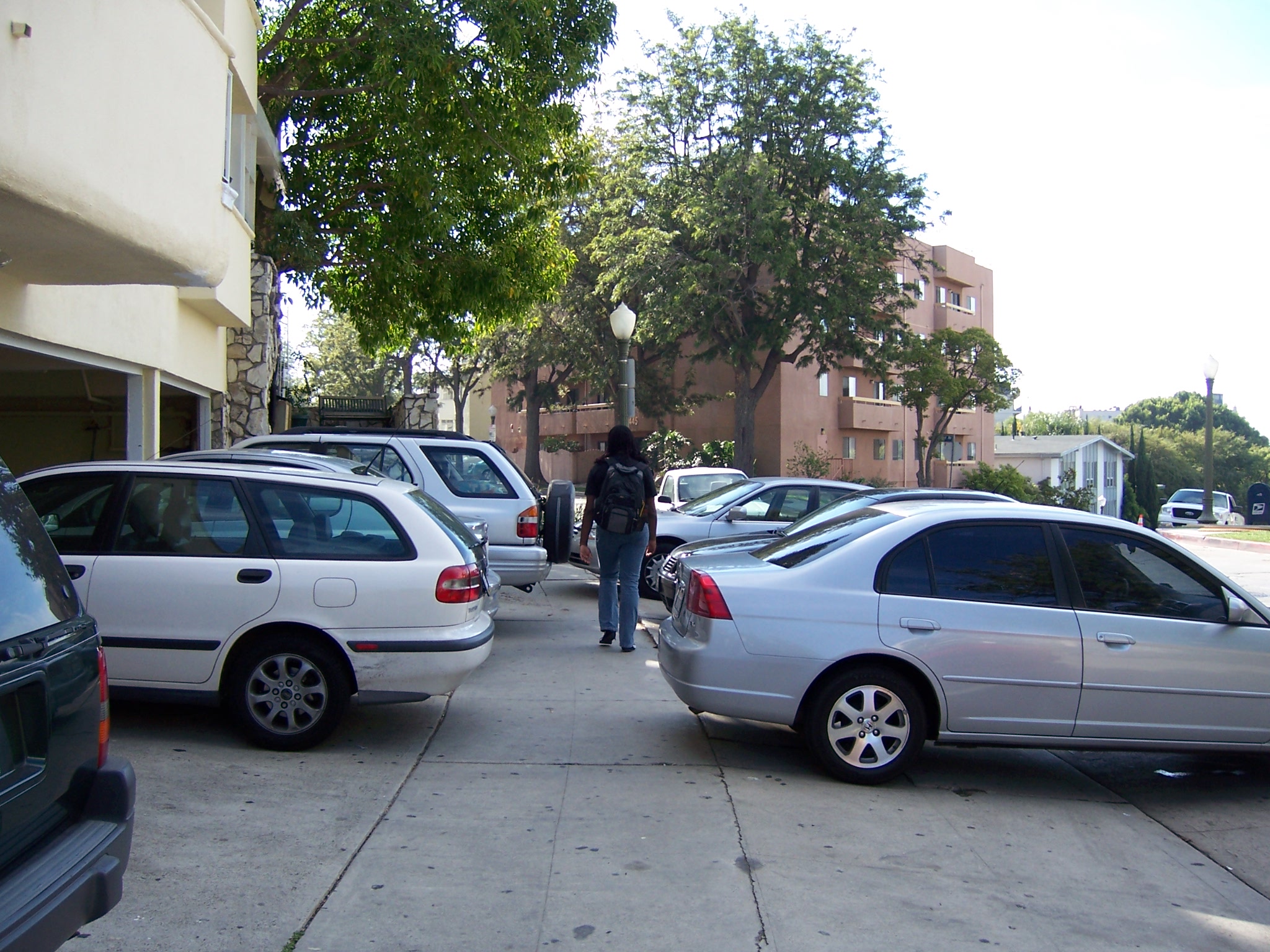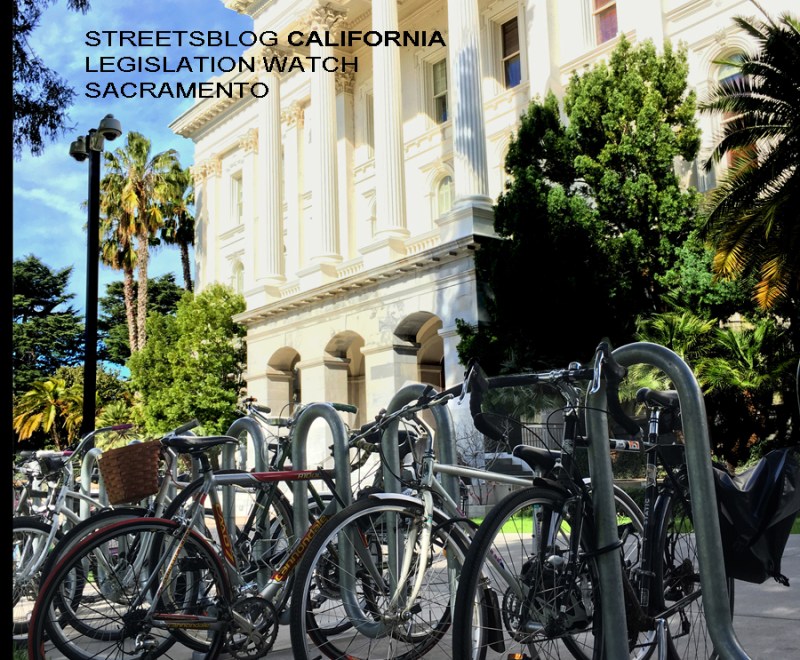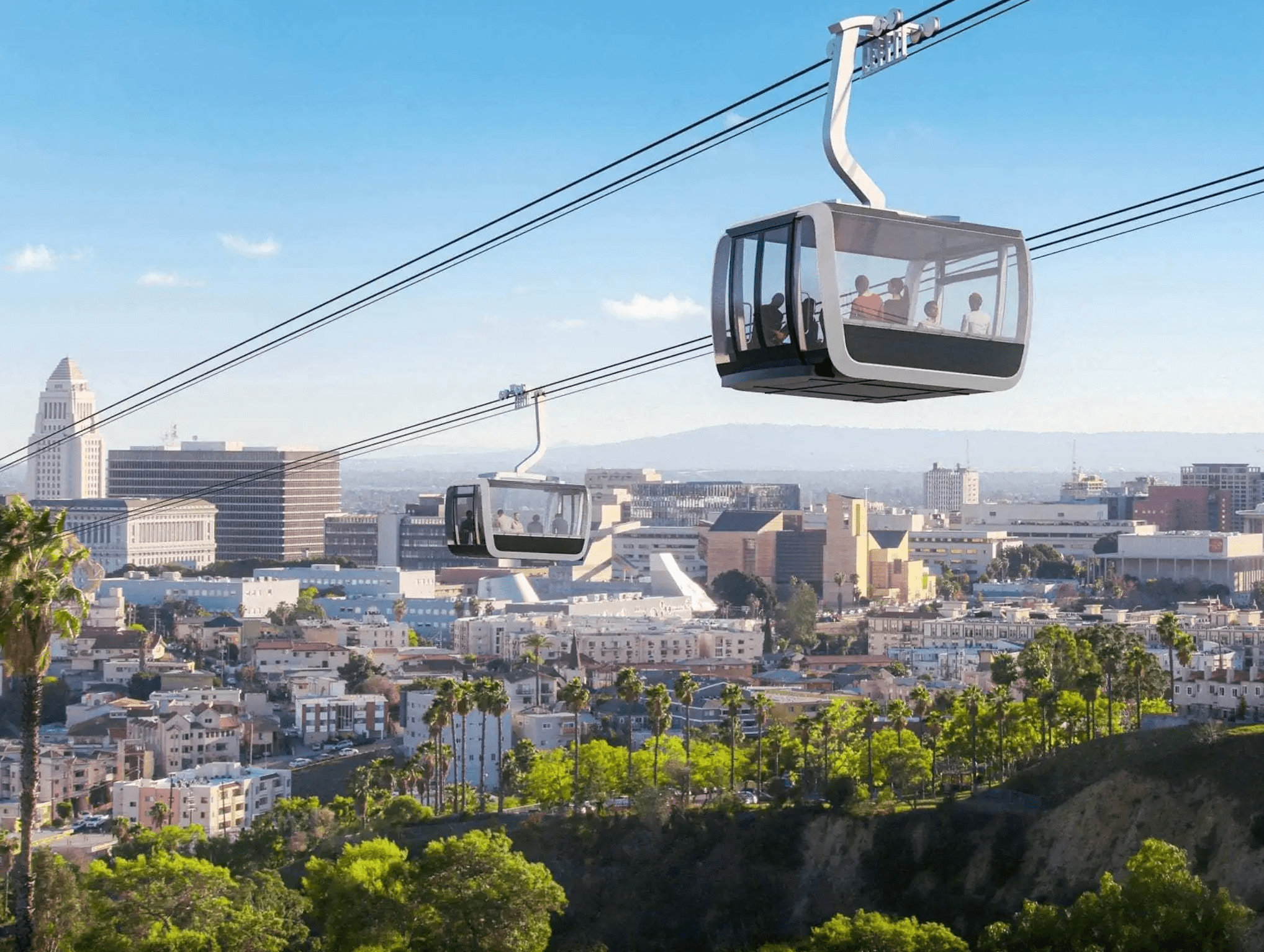Senate Transportation Vice-Chair Says Active Transportation Projects Increase Emissions
2:37 PM PST on February 13, 2020

Senator Patricia Bates (R-Laguna Niguel), vice chair of the state Senate Transportation Committee, doesn't seem to understand what active transportation projects are, who they benefit, or why California is investing in them. But that didn't stop her from repeating specious claims that bike lanes increase emissions. "Maybe it's something we need to kind of back off in terms of where we're putting our money," she said about state investments in active transportation.
The committee hearing earlier this week was an update on S.B. 1, the 2017 measure that raised gas taxes, not about the Active Transportation Program. But Senator Bates took the opportunity to argue against investing in it anyway, and her reasons came straight out of an over-the-top propaganda playbook.
Bates has made it clear that she is hostile to taxing people to pay for transportation, and hates the idea of paying for transportation infrastructure that doesn't involve cars. At the hearing, she said that active transportation projects--"translated as 'road diets,' which is the term used these days," she said, further muddling the topic--contribute to higher emissions by causing "mounting congestion on some of the primary arterials."
"I think [the Active Transportation Program] had more to do with moving people out of automobiles and onto bikes and things where you create less greenhouse gas and the emissions, but when you've got the other two lanes and people are sitting in their cars, running, you have the same problem," she said.
"I think there's actually a formula, where if you're sitting in the car running, and you're emitting toxic fumes, it's as bad as so many cars on the road. Are we going to do some sort of measurement of that in the future? Is it something for the environment, or maybe it's something we need to kind of back off in terms of where we're putting our money?"
Where to start here? First, active transportation projects and road diets are not equivalent. The first can encompass anything from sidewalks to crosswalks to signals to bike lanes to bike paths to pedestrian lighting... many different things. Road diets, on the other hand, are a specific type of intervention: they reconfigure a street by narrowing or removing lanes, sometimes adding bike lanes or widening sidewalks at intersections, sometimes adding vehicle turn lanes where none existed before. The purpose of road diets is to reduce car speeding and increase safety for everyone, particularly vulnerable road users.
Getting people out of cars and onto bikes and sidewalks by making the street more people-friendly, and thus reducing emissions, is also an excellent outcome, but the primary purpose of a road diet is safety.
Second: Blaming any bike lane or road diet for increased emissions is just plain disingenuous, at best. It seems too obvious to say it, but: bikes don't emit pollution or greenhouse gases. The question of congestion, and its connection to increased emissions, is worth exploring more, as Senator Bates suggested. But it's not useful to repeat misinformed nonsense about road diets "causing" more congestion.
There isn't yet a lot of data out there, but current research shows that most completed road diets have little effect on congestion--they do slow average vehicle speeds, but that's part of the point, to help increase safety. And they do so in general without increasing traffic delay, by making the flow of traffic smoother, decreasing conflicts, and--crucially--decreasing crashes and injuries.
According to a Federal Highway Administration list of case studies, road diets usually result in increased bicycle use, reduced traffic speeds, reduced crashes and injuries, and unchanged or improved traffic flows (the number of vehicles passing through an area in a given amount of time). In some cases, they increase vehicle travel time, with an average increase of less than a minute, which in some cases affects transit reliability--in other cases, accommodations for transit (like the addition of bus boarding islands) eliminated this effect. In addition, business owners and local residents were often appreciative of road diets after they were completed, even if they opposed them during the planning process.
One of the federal case studies is of Ocean Avenue in Santa Monica, which brought a 65 percent reduction in crashes in the first six months after it was built. Vehicle speeds went down, but there was no measurable increase in traffic delay. The number of cars using that road segment decreased, but researchers did not find any noticeable uptick in traffic on nearby streets.
On Telegraph Avenue in Oakland, a road diet that added parking-protected bike lanes led to more bike riders and pedestrians using that busy corridor, and a forty percent reduction in crashes in the first six months.
Mar Vista's Great Streets project on Venice Boulevard resulted in a decrease in collisions and injuries, no change in average vehicle speed or traffic volume, and about a thirty-second increase in average travel time at peak hours.
This actual data is in sharp contrast with the kind of fearmongering promulgated by groups like Keep L.A. Moving and Keep Pasadena Moving, whose anti-bike advocacy has prevented safety measures in those cities, and resulted in the removal of a road diet in Playa Del Rey before data could even be collected. Those fears are also fed by awful click-bait headlines like the one on the recent story in the S.F. Chronicle blaming bike lanes--very wrongly--for congestion on the Richmond San Rafael Bridge.
Sure, it's possible for a poorly designed road diet to increase congestion. But that's not what happens, for the most part. Senator Bates' repeating the notion is unhelpful, at best.
And blaming bike lanes for vehicle emissions is just plain gaslighting. Senator Bates is not alone in doing this, and everyone needs to stop. Bates also needs to stop pushing that notion as a reason for the state to stop funding active transportation projects.
"It remains a controversy out there," she insisted. "If it's not working, it should be eliminated from long-term planning, so that money goes towards where it's making the most difference in terms of mobility, and for air quality." She said this even after the heads of Caltrans and the California Transportation Commission tried to clear up her many confused assertions--for example, she kept insisting that she "heard" that projects funded by S.B. 1's Local Partnership Program are required to include an active transportation component (they're not).
It's important for legislative leaders to stay informed on current law and understand basic concepts of the issues they make decisions about, if nothing else than to limit the opportunities for industry lobbies to sway planning.
Other than these remarks, the hearing was a lightly attended dog-and-pony show, with agency heads talking about how S.B. 1 funds are being put to good use to improve California's transportation system. The money is being used in accordance with the law and with S.B. 1's requirements, they assured the committee. That is: only for transportation, and focused on "fix-it first" and efficiency.
$4.4 billion has already been allocated from S.B. 1 since it passed, going towards 1,159 capital and maintenance projects led by Caltrans, with another 848 more expected to be funded this year. According to CalSTA director David Kim, the program has also had "a meaningful impact on transit and rail statewide, with long-term commitment" from state funding from both S.B. 1 and the Greenhouse Gas Reduction Fund, which is funded by cap-and-trade. New transit funding has gone for rail service improvements and expansions, zero emission buses, and a streetcar project, and a new round of funding will go out in April of this year.
Streetsblog California editor Melanie Curry has been thinking about transportation, and how to improve conditions for bicyclists, ever since commuting to school by bike long before bike lanes were a thing. She was Managing Editor at the East Bay Express, editor of Access Magazine for the University of California Transportation Center, and earned her Masters in City Planning from UC Berkeley.
Read More:
Stay in touch
Sign up for our free newsletter
More from Streetsblog California
Thursday’s Headlines
CA youth speak out on climate: How LA Metro plans to spend $ from canceled 710 freeway; Watch out, illegal SF parkers, tickets are coming; More
Legislators Tackle AV, School Zone Safety
Are AVs freight trucks ready to be deployed on California roads with no one in them?
Metro Looks to Approve Torrance C Line Extension Alignment
Selecting the relatively low-cost hybrid alternative should help the oft-delayed South Bay C Line extension move a step closer to reality
What to Say When Someone Claims ‘No One Bikes or Walks in Bad Weather’
Yes, sustainable modes are more vulnerable to bad weather. But that's why we should invest more in them — not less.
Wednesday’s Headlines
Road project leaves Half Moon Bay residents without access; Kern County residents concerned about a carbon capture plan; Who works from home in the Bay Area? More




